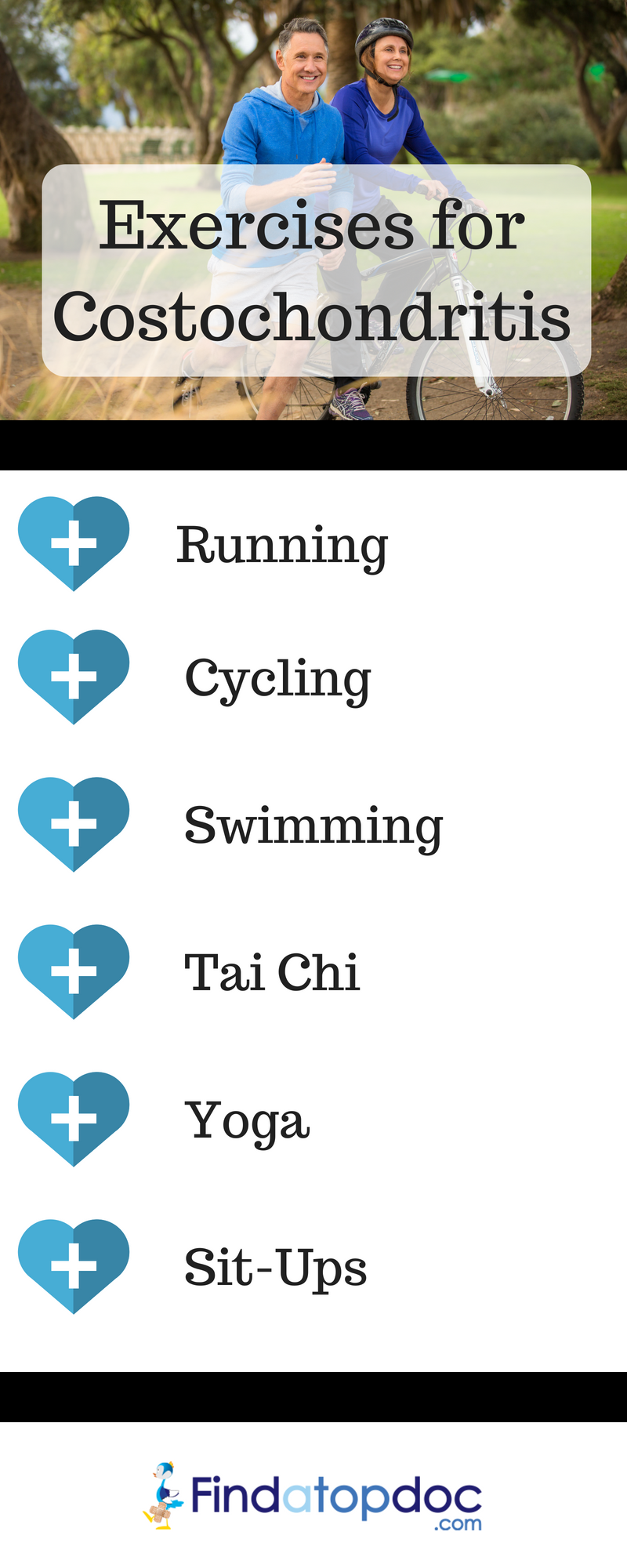
Costochondritis is an inflammation of the cartilage in the rib cage. This condition affects the cartilage where the upper ribs attach to the breastbone, or sternum, an area known as the costosternal joint or costosternal junction. Chest pain caused by costochondritis can be mild or severe. Mild cases may only cause your chest to feel tender to touch when you push on the area of your chest cartilage. Severe cases may cause shooting pains down your limbs or unbearable chest pain that interferes with your life and doesn’t seem to go away. The condition often goes away within a few weeks, but some cases may require treatment. Here is everything you need to know!
Costochondritis Causes
Costochondritis is an inflammatory process but generally has no cause. Repeated minor trauma to the chest wall, overuse of the arms, or viral respiratory infections can cause chest pain due to costochondritis. Sometimes, costochondritis as a result of bacterial infections can occur in people who use IV drugs or who have had surgery to their upper chest. After surgery, the cartilage can become more prone to infection, because of reduced blood flow in the region that has been operated on. Different types of infectious diseases can cause costochondritis:
- Viral: Costochondritis occurs with viral respiratory infections because of the inflammation of the area from the viral infection itself, or from straining from coughing.
- Bacterial: Costochondritis may occur after surgery and be caused by bacterial infections.
- Fungal: Fungal infections are rare causes of costochondritis.
Costochondritis Symptoms
- Costochondritis causes chest pain, felt at the front of the chest.
- It is sharp and stabbing in nature and can be quite severe.
- The pain is worse with movement and deep breathing.
- Some people may feel an aching pain.
- The pain is usually localized to a small area but it can spread to a wider area.
- The pain tends to wax and wane and it can settle with a change of position and quiet, shallow breathing.
Who is at Risk?
Costochondritis occurs more often in women and people over age 40. You may also be at a higher risk for this condition if you:
- participate in complex activities
- perform manual labor
- have allergies and are frequently exposed to irritants
Your risk increases if you have any of the following conditions:
- rheumatoid arthritis
- ankylosing spondylitis
- reactive arthritis
- Improperly handling heavy loads can stress chest muscles.
How is Costochondritis Treated?
Doctors usually treat costochondritis conservatively. Resting and avoiding strenuous exercise that affects the chest wall can help. Pain relievers can do that as well, such as ibuprofen or acetaminophen. Children under age 18 should not take aspirin due to a risk for Reye's syndrome. In some instances, a doctor may recommend injections of lidocaine or corticosteroids in order to reduce pain and inflammation. Other treatments that may help to relieve chest pain include:
- Applying moist heat by way of warm compresses.
- Taking cough suppressants to ease coughing and reduce pressure to the cartilage.
- Physical therapy to ease tension in the chest wall.
This condition usually isn’t persistent. In many cases, costochondritis goes away on its own. Mild cases of costochondritis may disappear after a few days. To lower your chance of persistent and chronic costochondritis, make sure to carry and lift heavy loads properly. Try doing fewer high-impact exercises or manual labor. Call your doctor immediately if you experience chest pain while performing any of these activities.


